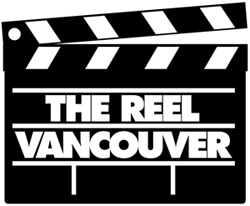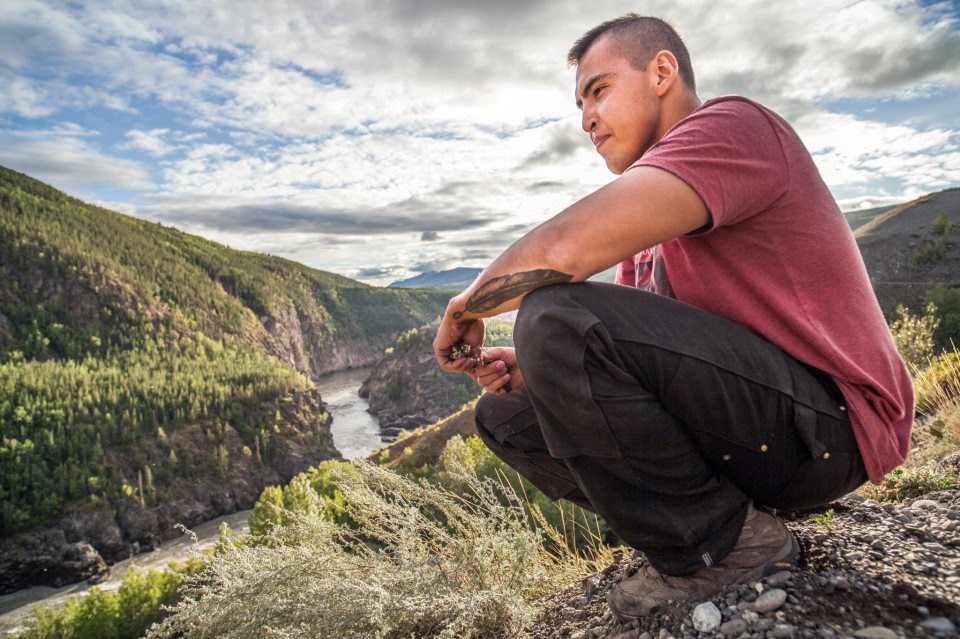 |
Yeats was wrong when he said “The best lack all conviction, while the worst are full of passionate intensity.” It’s nothing short of inspiring to look around at all the amazing projects our generation has taken on in the name of bettering ourselves and the world we inhabit. One that has shot to the forefront of a lot of Canadians (and specifically BCers) is the Enbridge and Kinder Morgan Pipeline, or more accurately, Canada’s Carbon Corridor and the dangerously invasive nature of extracting natural gas by way of hydraulic fracturing, or “fracking.” |
Two concerned Vancouverites have taken to the big screen in an attempt to educate and invigorate people in the fight against the industrialization of Northern BC. Damien Gillis, and Fiona Rayher are the directors behind the upcoming documentary Fractured Land which tells the personal story of Caleb Behn. An eloquent First Nations Law student, Caleb is fighting the development of the natural gas industry in his home territories in northeast British Columbia. The film follows him to New Zealand while he finishes his last year of law school and learns from the Maori people about their own battle with the natural gas industry.
The team behind Fractured Land is multifaceted and uber talented: Damien Gillis gained attention after his 2009 documentary Farmed Salmon Exposed: The Global Reach of the Norwegian Salmon Farming Industry and hans’t stopped exposing the detrimental strength of corporate colonization of the world’s natural beauties. He is also the co-founder (alongside broadcast veteran, Rafe Mair) of the Common Sense Canadian, an online journal focussed on news and opinions surrounding natural resource and environmental issues. Fiona Rayher is a born and raised Vancouverite with a BA in PoliSci, a passion for social justice and and the Artistic Director of Gen Why Media. Together they’ve teamed up with passion project engines like Daniel Conrad (Accident by Design, and Seducing the Guard), Tara Mahoney (co-founder of Gen Why Media) and Hilary Henegar whose research and resulting article on fracking in BC became the rolling stone that is now Fractured Land.
I spoke with the face of the film, law student Caleb Behn about why now was the time for a film like this, and how this became such an important issue for not only him, but Canadians across the board.
“We are already behind. The potential consequences of these developments are largely unknown,” Caleb explains, “Climate change/ uncertainty is occurring and in the midst of all this a massive and unprecedented industrialization of the Carbon Corridor is taking place. Now there is motivation fueled by injustice, opportunity due to market flooding and IdleNoMore movements, resources such as social media and an important rationale concerning the potential risk of these developments, all coming together to form a space for significant change.”
http://www.youtube.com/watch?v=fe591PtCfa0
Caleb attended University of Victoria Law School and obtained a Juris Doctor degree with the concentration in Environmental Law and Sustainability and feels his work as oil and gas officer for West Moberly First Nations is just as important as his involvement with Fractured Land; if not slightly less disheartening. “The problem is that when every single little fight you have to protect a ‘wildlife tree patch‘ or a SARA high-risk songbird habitat or a known berry patch favoured by an Elder is a loss that hurts your very soul. I witnessed the slow creeping death of my land, my culture and my people in those government processes and it broke my heart. So I decided to find better tools to engage with.” Enter Damien and Fiona, and their idea for Fractured Land.
A transmedia project, Fractured Land offers several platforms for audience members to become involved and feel empowered in the fight to save our beautiful province.
“Transmedia storytelling is basically “mixed media” for a Web 2.0 world. Using film, video, photos, graphics, social media, books, theater etc. It brings the audience closer to the subject and often imparts a sense of ownership. Instead of simply sitting in a darkened movie theater and taking in a story passively, you get to interact with the story - get to know its characters and subplots and the history that serves as its backdrop - and over a period of time.” Explains Hilary Henegar, Digital Media Strategist and Community Manager for the film.
“The whole project started as an article idea that Fiona pitched me when I was editor at GranvilleOnline.ca. After months of investigating and unpacking the hidden story behind BC's enormous natural gas fracking industry, and then meeting Damien, the article became a film. Then, about 9 months ago, after hearing only small things here and there about the project, Fi and D approached me to do the social media for them. Then, after meeting Caleb and becoming more educated about the extent of the story - of the dysfunctional system it both supports and is a product of - the project took on a more spiritual bent for me; I can't not do this. Contributing to this project is part of healing the fractures inside myself and is my contribution toward a future is more equitable and in balance with the totality of life on this planet.”
The final goal of the film is try to heal some of the fractures you see as a result of this all, both the literal fractures under the ground as well as the ones we’re seeing above ground.” -Caleb Behn
In the past two years, the project has gathered a following of concerned citizens and movements like #IdleNoMore and the resistance outside Enbridge hearings being held in Vancouver and Victoria. And those concerned citizens have become active members of the Fractured Land community continuing the fight by supporting the multi-platformed project. “The mix of film, Facebook, live events, an e-newsletter and most recently, web video chats are helping us tell this story from a variety of angles and perspectives. And through the exchange of research, news, photos and videos with our audience (who are really more like members of our crew than passive viewers), the storytelling becomes collaborative - and our collaborators become our allies, evangelists, helpers and now financial backers.”
“We have been rewarded with interest and support and now IdleNoMore and the heating up Enbridge fight and likely changes in government at the provincial and federal level we are hopeful that our work will yield some results.” Caleb speaks hopefully about the project’s next phase. “We hope the movement will be one of inspiration, hope and optimism in the face of overwhelming odds.”
The team is grateful for the support the cyber-community has shown and is excited to be entering the next phase of filmmaking, but they still need your support, not only financially, but in getting their message out there and keeping the enthusiasm for the fight. “Besides donating through Paypal, the best way to support the project is to sign up for the newsletter and follow along on Facebook. We'll be looking for collaborators on an on-going basis, and we'd love to be able to send calls out to our crew to help Caleb in his work. You never know when he'll need a geologist, photographer, lawyer or eager volunteer willing to learn in exchange for canvassing! Ultimately, the crowdfunding campaign is an invitation to join us in this work to protect the land and the rights of the people to practice their traditional customs.”
Fractured Land's IndieGoGo campaign ends at 11:59pm on January 18th. visit http://www.indiegogo.com/fracturedland to donate, or their website http://fracturedland.com/ to support and donate.



